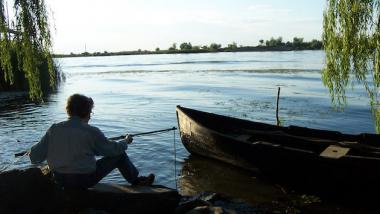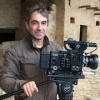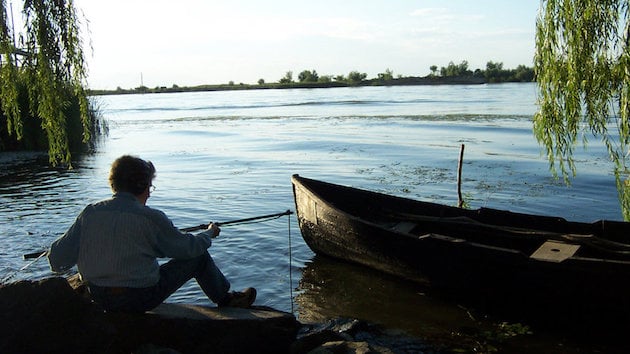
New Zealand composer Annea Lockwood’s shtick is that she’s shtickless.
In a roving presentation Thursday night at Berkeley’s David Brower Center, Lockwood offered insights into her process and shared excerpts demonstrating environmental sounds used in three multimedia installations, A Sound Map of the Danube (2001-5), Jitterbug (2006), and Wild Energy (2014). A conversation with composer, producer, and Other Minds Executive & Artistic Director Charles Amirkhanian, introduced concepts that have guided Lockwood for more than four decades. Lockwood’s wide-ranging scores gather and layer sounds from conventional, electronic, and indigenous instruments, graphic scores, human voices, animals, machines and objects, or ambient sounds most often found in nature.
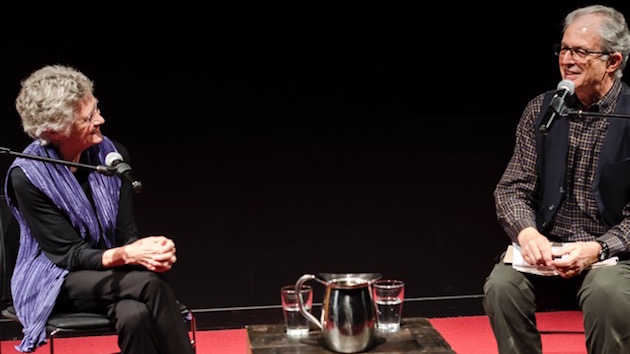
Key to her work is a kinship she feels for the natural world, especially source material found in and near rivers and “invisibles” that include low frequency earthquake tremors, whale and volcanic recordings, ultrasound emissions from trees, water sounds captured by conventional or hydrophonic microphones, moth-seeking bat echolation calls, insects not visible to the human eye, rocks and sediment fluctuations, and more.
Lockwood established herself as explorative early on — making a splash during the years between 1969 and 1982 with an ongoing series, Piano Transplants, in which she burned, beached, drowned, and in other ways transformed broken, discarded pianos. Collaborations have been a through-line marking a career that began with conventional study at Royal College of Music, London. She went on to electronic music courses under Gottfried Michael Koenig and projects with poets, choreographers, scientists, acoustic ecologists, visual artists, and musicians from multiple genres. She is an Emerita Professor at Vassar College and 2007 recipient of the Henry Cowell Award.
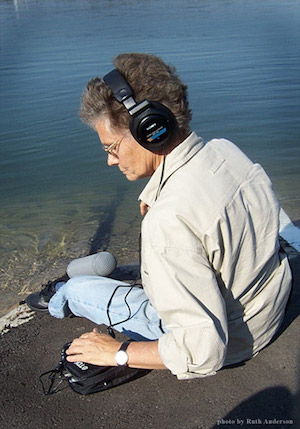
Seeking animated sounds that “keep her ears alive,” she said, is stimulating. Composing, by her definition, is moment-to-moment decision-making. Crucial to her work is listening with close attention paid to sounds that in their initial states cannot be controlled. Finding conventional instruments inert after her early years as a musician, Lockwood said she turned to the vitality and unpredictable aspect of sounds in nature. “One-hit,” unrepeatable sounds — shamans entering trance states, tigers mating, a woman’s breathing, river basin gravel shifting — she finds intoxicating.
Indeed, listening to the Danube River’s gulps and thuds that sounded like soft-stroked hand drums played underwater, or the donkey-like braying of geese, or the gentle plucks and burbles of moving water mixed with the hiss and marimba-rattle of sand grains was mesmerizing. It was predictable, for the meditative effect caused by looped, repetitive sounds that slow breathing and lower blood pressure, but surprising in the firm, internal patterns and structures revealed. It’s possible to hear cadence, phrases, lines, and harmony in a river, if a person slows down, is quiet, and pays attention.
“Rivers give live performances every day,” Lockwood said. As do trees oxygenating, the earth’s crust, a bench collapsing, and other sounds that, combined by Lockwood in another example, created a circular song filled with spear-like, stabbing interjections, a constant low throb, brief birdlike chirps, and what brought to mind human throat hiccups or burps.
Amirkhanian, whose Other Minds supports new music exploration and cross-cultural interactions not often found in traditional concert halls, asked Lockwood what guides her compositions. Narratives that she imagines, connections that introduce caring for and joy in the source of sound, combinations that hold similarity and can “slip in and out of each other” or contrasting sounds positioned to juxtapose have most of her work layered with six or more tracks. “I collect clusters of sounds,” she said, after which she determines the sound that will begin a piece, how the sounds will merge or overlap, whether the harmonics will be played with or against each other and so on. Balanced throughout are calculations of the physical impact the accumulated sounds have on the listener.
What distinctly isn’t on her mind is worry about the future of music. Lockwood said she draws enjoyment from the “explosion” of women composers today (she called out the work of Ashley Fure in particular) and the many different directions composers are pursuing. She finds no need to limit music by predicting its future.
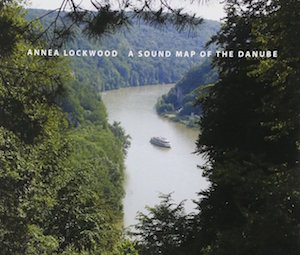
If there was one complaint about the evening, it was that not enough of Lockwood’s music was played. After hearing the analysis and abbreviated examples of elements, it would have been more satisfying to hear long portions of the highlighted works, if not one of the works in its entirety. Albums on sale in the lobby offered opportunity, as do performances on select days Nov. 10–17 at The Lab in San Francisco. A Sound Map of the Danube will be played in its entirety twice daily during open gallery hours. Visitors are welcome to come and go freely (no door admissions required). Jitterbug will be performed by Lockwood, William Winant, and Fred Frith on Nov. 18, with a 9:00 p.m. start and ticketed admission ($20 Guests / $12 Members).

